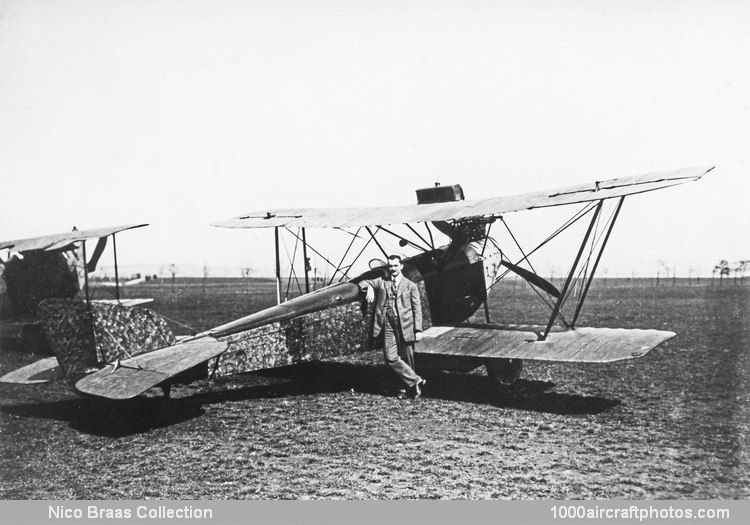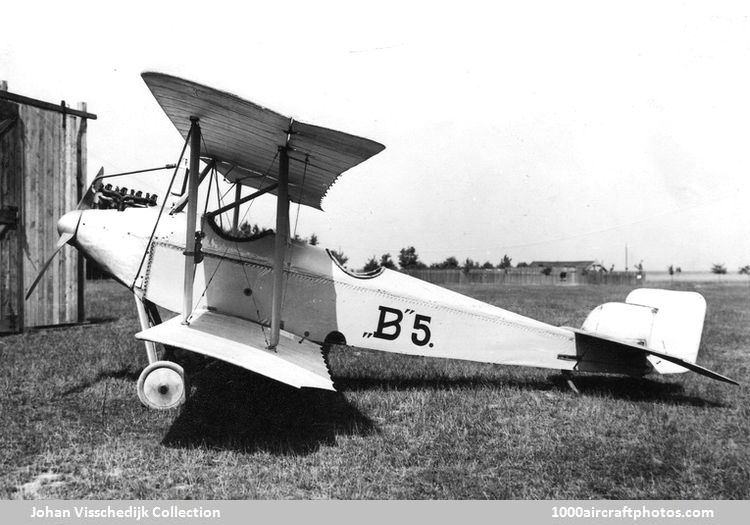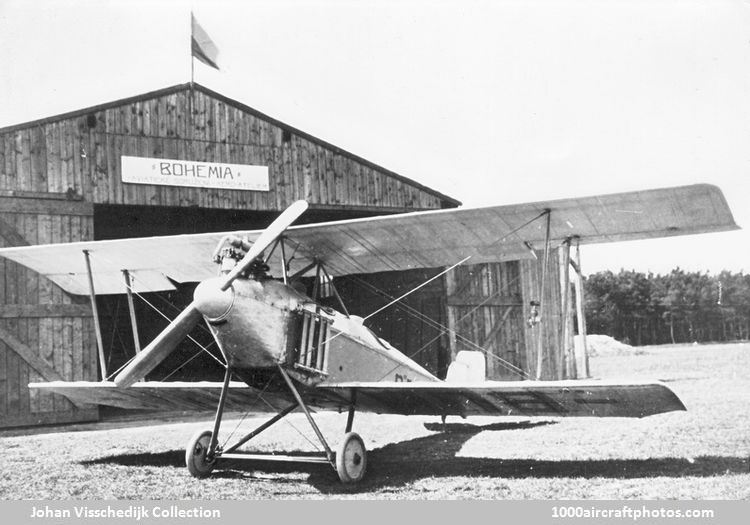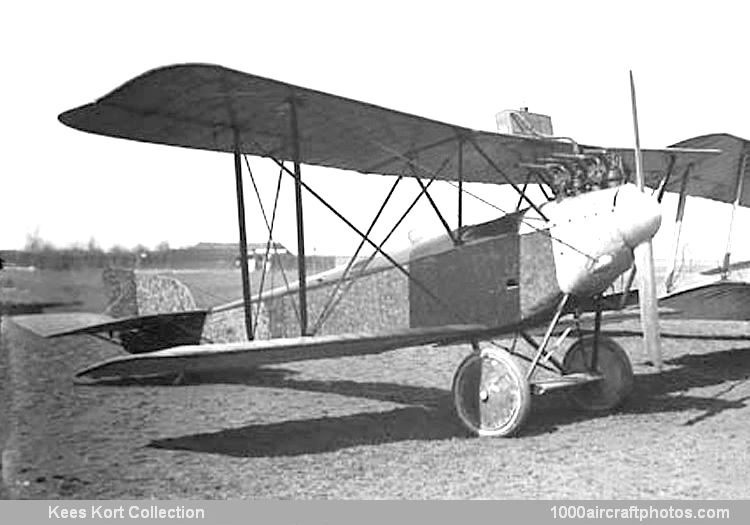02/28/2023. Remarks by
Johan Visschedijk, with a big thanks to Zdeněk Čejka for translating a Czech article to English: "Pictured with the aircraft is engineer Oldřich Haller (Oldřich = Ulrik), who was one of the pioneers in Czechoslovakia aviation.
Bohemia B 5 (
Johan Visschedijk Collection)
Haller designed a number of aircraft, including the two-seat Bohemia B 5 that was first flown on April 27, 1919. This was the first powered aircraft designed and built in Czechoslovakia after WW I. The aircraft was built for and operated by the Aviatického sdružení Bohemia (Aviation Association of Bohemia) at airport Bory, some 6 mls (10 km) southwest of Pilsen, unfortunately it crashed on the same airport three weeks later, on May 17, 1919.
In September 1919 a new aero club was formed, Západočeský aeroklub RČS (West-Bohemian Aero Club of the Czechoslovakian Republic), and Haller designed a new aircraft as a replacement for the crashed B 5. The designer designated it Haller H 6, while the aero club designated it Haller ZA-1, ZA being the initials of the aero club.
Haller H 6 (
Kees Kort Collection)
The H 6 was an all-wooden two-seat training biplane, differing from the Bohemia B-5 by the three-cylinder air-cooled engine being designed by Haller. It had modified wings supported by heavily outward tilted struts and larger tail surfaces that were more effective. The landing gear had a continuous axis, covered with a small surface, and was equipped with relatively large wheels, enabling better movement on rough terrain.
Working on it all winter through, the aircraft was finished early 1920, however, it turned out that the engine was not powerful enough. Eventually an old 100 hp four-cylinder Argus was acquired, which required the modification of the nose and the propeller.
Since the Argus engine had a fuel pump, the fuel line was diverted and the gas tank was placed below the front seat. Tests in the spring of 1920 proofed the modification with the new engine (pictured on this page) was fully satisfactory.
The new aircraft was also shown to the public for the first time at the first aviation day in Pilsen on May 1. 1920, where it received well-deserved admiration from representatives of the Ministry of Defense and from representatives of the Ministry of Public Works, as it was, together with the Bohemia B-5, one of the first Czechoslovakian aircraft constructed without any state support, while the first Letov Š-1 aircraft (initially desinated
ŠH 1) produced by the factory was only flown a week later, May 8, 1920.
Haller's H 6 (or ZA-1) was used not only for promotional and sight-seeing flights at air days, which it participated in three times in total, but above all for its original purpose, i.e. the training of members of the West-Bohemian Aero Club. By the end of May 1923, it had flown a total of 35 hrs 45 min, and 2,365 mls (3,806 km). On June 3, 1923, while inspecting the club's airplanes in the hangar, a careless visitor caused a fire on one of the machines, which spread very quickly. Despite all efforts to extinguish the fire, the H 6, two other aircraft and one aircraft under construction were destroyed within twenty minutes."




